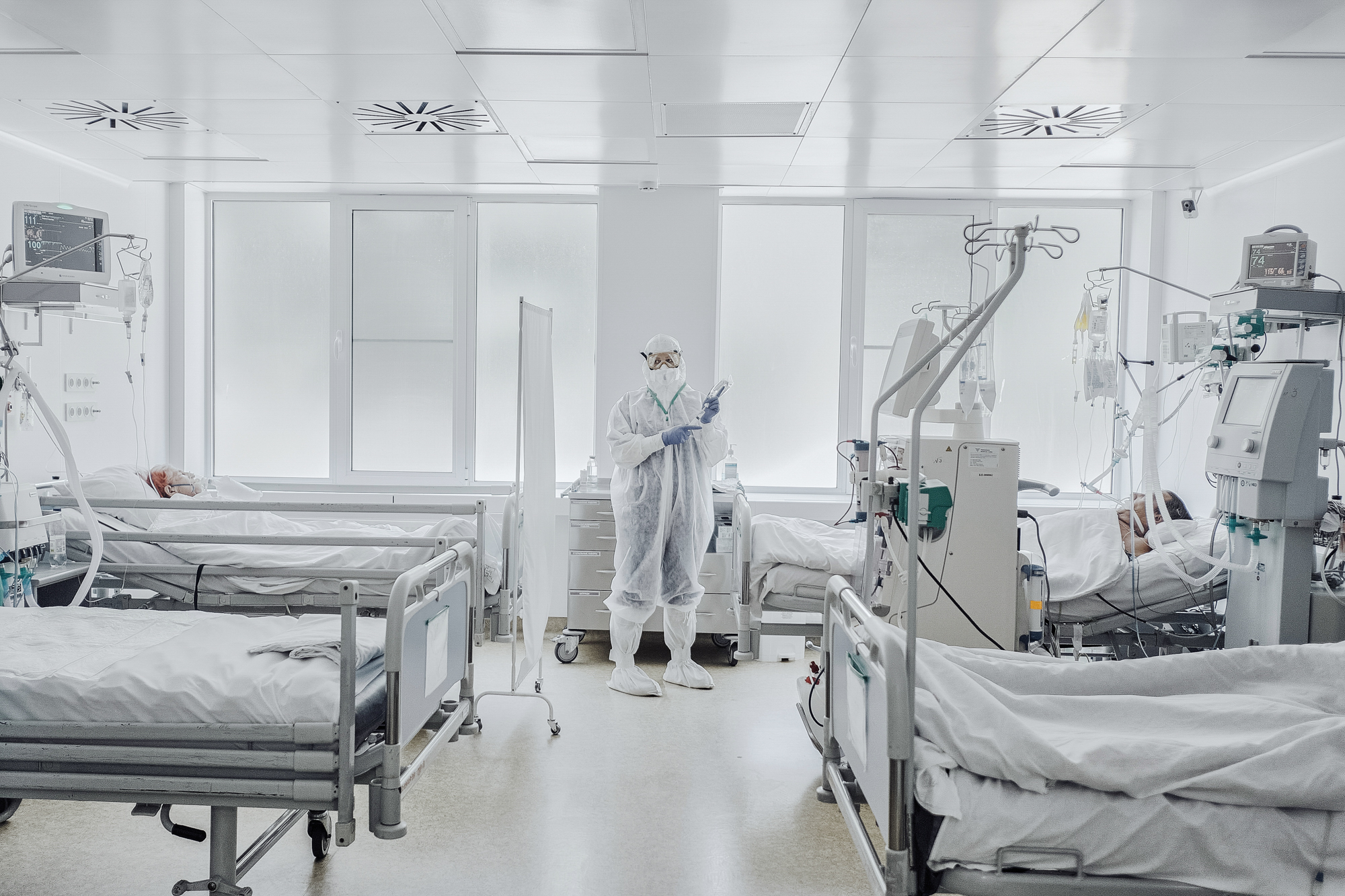Creativity and quarantine: the cultural moments that shaped 2020
2020 may have been a year of relentless change, but 12 months of challenges have also spurred radical creativity. From memes to new media, these are The Calvert Journal editors’ highlights from a year in New East culture
Nadia Beard, editor-in-chief
Russian Music 2.0 by Territory Festival
Along with the death of planning, 2020 has also wrought the death of concert life. I’ve missed live performances; their occasion, their drama, the promise that you can witness something amazing, or something terrible, that will all be over in a flash.
I was sceptical of live-streamed music performances, but this year I’ve come to see them less as simulations of what we enjoyed in The Before Time, and more of an interesting creative setting in their own right. Russian Music 2.0 brought together Russian composers and visual artists for an interesting, if not occasionally bizarre, one-off YouTube performance. Russian-German pianist Igor Levit live-streamed more than 50 concerts from his home on Twitter — a remarkably generous public service from a musician whose concerts usually sell out. Even opera has gone digital: I enjoyed 8 Songs in Isolation, a specially commissioned opera featuring the new work of eight composers — Russia’s Ilya Demutsky among them — which tackled the experience of isolation in many of its guises.
This form works when it doesn’t try to replace concerts. The intimacy between performer and audience that was missing from concert halls is suddenly in abundance. The hammed up performance of the stage is replaced with something more subtle and relatable. When it’s live, the editing button is useless, and the possibility that you could be close witness to delight or disaster is electric. I’ll welcome the first night I’m back in a theatre, but for now, I’ll continue to enjoy the frisson of live music from the comfort of my pyjamas.
Liza Premiyak, managing editor
The joys of online cookery
It began with Olia Hercules’s IGTV tutorial on Ossetian pies. Before this year, my experience with dough started and ended with store-bought puff pastry, joylessly unrolled onto a baking tray to make a slap-dash attempt at dinner. I quickly learned that bread is the most forgiving of foods. Too dry? Just add a bit more water. Too wet? Add flour. Ossetian pies are a fuss-free introduction to baking. Firstly, there’s no crimping or decorating involved: just make a parcel, flatten it into a pancake, and load it into the oven. While everyone was making sourdough, I was busy trying to recreate the staple of Eastern European comfort food — kiosk or canteen pastries. As you’d expect of 2020, there are plenty of online cookery classes specialising in Eastern European cuisine. Latvian chef Alla Driksne has pirozhki tutorials for every craving on her YouTube channel AllasYummyFood, and runs live webinars on everything from pryaniki to honey cake to potato pies. San Francisco’s Anna Voloshyna posts regular mouthwatering photos of khachapuri, which you can learn to make with her over Zoom. With a background in food photography, she makes the humble Yavorivs’kiy (buckwheat and mushroom) pie, a delicacy from Ukraine, look as good as Red Velvet cake. However, the tutorial I shared most among friends and relatives was filmed in rural Azerbaijan and shows a woman making cabbage pies in nature; not least for the recipe but also for the wonderful, calming background sounds of clucking chickens, river streams, and the crackle of an open fire.
Katie Marie Davies, features editor
Miel Pops (zhu zhu zhu, zhu zhu zhu)
If this is your first time being confronted with a CGI dancing llama (and if it is, you should probably consider yourself blessed), then here’s a brief meme history lesson: in May 2020, TikToker @chernaya.princessa — who also performs under the name Rozalia — uploaded a clip of herself singing the 2010 Russian jingle for cereal brand Miel Pops. The clip gained some traction, with a modest 600,000 views, before blowing up when another user, @awa_de_horchata_uwu, shared a remix. Enter the llama.
The meme went viral, complete with a healthy dose of drama as enraged Russians complained that the jingle was being mangled by a global audience with the audacity to sing the wrong words. (Spanish-speaking TikTok in particular interpreted “Miel Pops” as “Mi Pan”, which is why you’ll now see millions of people dancing to this song with loaves of bread).
It would be easy to crown Miel Pops as the New East meme of 2020 due to absolute sheer fucking weirdness, because we are all stuck in our homes, disease is ravaging the land, and we as a species have reacted by uniting around a llama that may or may not be singing about bread, something you will either see as a triumph or failure of humanity depending on your personal point of view.
But deep down, this is also a parable about the nature of art, and particularly the nature of art in the internet age. As Belarusian band Molchat Doma told The Calvert Journal after their own 2020 viral success: once you share your work, it’s no longer completely yours. If meme culture proves anything at all, it’s that creativity inspires more creativity — once a sound goes viral on TikTok, it will garner millions of remixes, responses and retakes. And while that can sometimes be difficult for creators (and often for good reason: Rozalia eventually renamed her Miel Pops clip, “THIS IS NOT A SONG ABOUT BREAD”), more art and more self-expression is always a good thing. After all: Miel Pops started life as a 2010 Russian cereal jingle, and now has become a global Gen Z in-joke. And if you ask me, in 2020 — the year that many of us were isolated from our friends, family and loved ones — that is something very special indeed.
Lucía de la Torre, staff writer
Lockdown filmmaking
Cinema is the form of escapism per excellence — and, in a year where we found ourselves constantly glued to our screens, anxiously refreshing newsfeeds, films were one of the few realms of the Internet where we could find peace. Although the cinema industry was severely hit, like a phoenix rising from already precarious ashes, films made their way into our ‘new normal’ through a new, unexpected genre: lockdown films. These were mostly minimalist, meditative, and near-monotonous shorts that, to me, evoked a feeling of togetherness and universality in self-isolation. Across the New East, whether it was urban scenes of deserted Prishtina or pandemic nightmares of people in Lithuania, the genre allowed emerging filmmakers to produce meaningful work with few resources, and to showcase it in the online film festivals that were born thanks to 2020’s virtual culture wave. In our region, where resources and visibility in the film industry are limited, this is a breakthrough. The question now remains whether the lockdown film will be a short-lived genre of a time best forgotten, or a more sophisticated version of the home video that will continue to bring filmmakers and film-lovers together in the intimacies of their homes and inner worlds.
Anastasiia Fedorova, strategy and partnership manager
Russian Queer Revolution
2020 was a big year for LGBTQ+ solidarity: the year in which we tried to find a common creative language and imagine a better queer future not only in the New East, but worldwide. We have seen the rise of militant homophobia in Poland, and transphobic legislative initiatives in Hungary and Russia. But I feel like global queer solidarity is on the rise. LGBTQ+ people in different countries treat each other with empathy and encouragement and share resources, which truly gives me hope. I spent a big part of this year working on my curatorial project Russian Queer Revolution, an artist platform for Russia’s LGBTQ+ creativities. In September, I curated an exhibition at Vogue Fabrics London, which was a collective portrait of Russia’s queer community: more than 70 faces which prove that Russian queer experience is not just pain – but also a great deal of beauty, joy, pleasure, pride and talent. Putting together this exhibition was a great experience not only because I got to spotlight Russian queer underground – but also because of how much support I got for the international LGBTQ+ community (we are still raising funds for Russian trans people here). Trying to create more links between queer youth across the New East is certainly a plan for 2021.
Paula Erizanu, culture editor
Belarusian protest art
In 2020, the world has seen a different Belarus. The international media spotlight has moved away from the long standing dictator Alexander Lukashenko, and has instead helped give a voice to Belarus’s crowds fighting for freedom and democracy. It has been inspiring to witness Belarusians’ courage in photos, despite the unprecedented police brutality they have met. “For the first time in 10 years of my work as a reporter, I felt that people are no longer afraid,” photographer Julia Szlabowska told us, in her moving photo story capturing the key role of women in the unrest. I was astounded by how dynamic, inventive, and resilient the country’s creative community has been at keeping the flame of the protest movement alive, by standing up in front of the armed police in an art performance, representing the clashes with the police in embroidery, retraining riot police as computer programmers, and making a peaceful movement’s weapons: posters and protest signs, and protest attire, such as life-affirming hoodies saying “Only Cupid can shoot Belarusians”. As the demonstrations persist, follow Chrysalis magazine on Insta, who platform the best of engaged art in, and about, Belarus, and donate to victims of violent repressions here.


